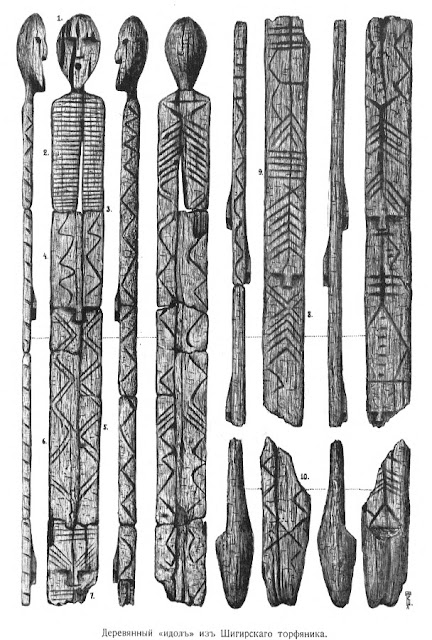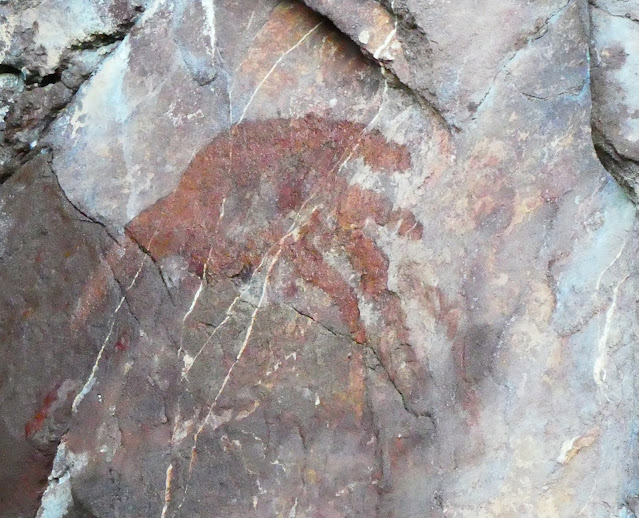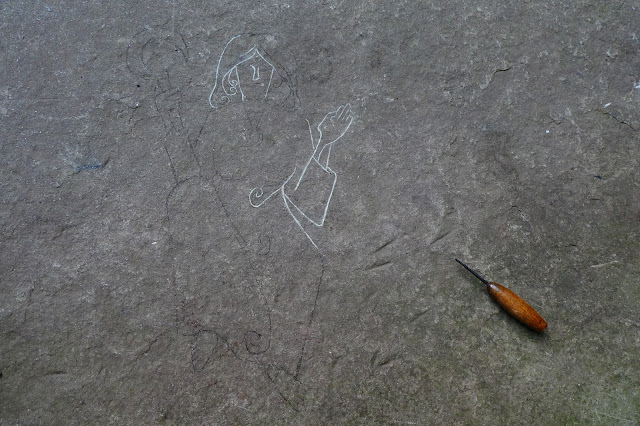Re-Drawing the Past
Having spent the last few months developing a distinctive 'native art form' for my mythical world, in which gods, mythical concepts and heroes are signified (rather than represented - following the Lévi-Strauss model of 'primitive art' whose aim is not imitation of the subject), a random bit of browsing overturned the notion of a unified art style.
 |
| Schematics of the idol's multiple faces and design elements |
The age and distinctive design work on this idol made me realise the importance of establishing an 'elder culture' which existed long before the present time in which the poem's narrative is set, in which the origins of the 'contemporary' forms could perhaps be traced. Having a single homogenous style of representation made me think of those old TV period dramas set in, say, Edwardian days, when all furniture, fashion and design featured is of that exact era - with nothing from the Victorian or Georgian periods still extant. Furniture, fabrics and other items are durable and in a pre-disposable world, would have been handed down through families - the same with objects which, to early peoples, would have had rich ritual and symbolic significance.
The idol's origins in Siberia were also an interesting connection to my god figure Hrefni, whose form and function are that of the traditional shaman, and its existence challenges the accepted Western-centric view of civilization's development; not helped by the accidental marginalization of whole cultures and peoples whose art and ritual objects were made of perishable materials and have therefore been lost through time.
By developing these themes I hope to start tracing a culture for the gods themselves, and define a 'back story' for their evolution from a few wandering hunter-gatherer types to their elevation as deities of various nations and tribes; migration stories which are probably not far removed from real-world origins of many mythical cultures.



Comments
Post a Comment